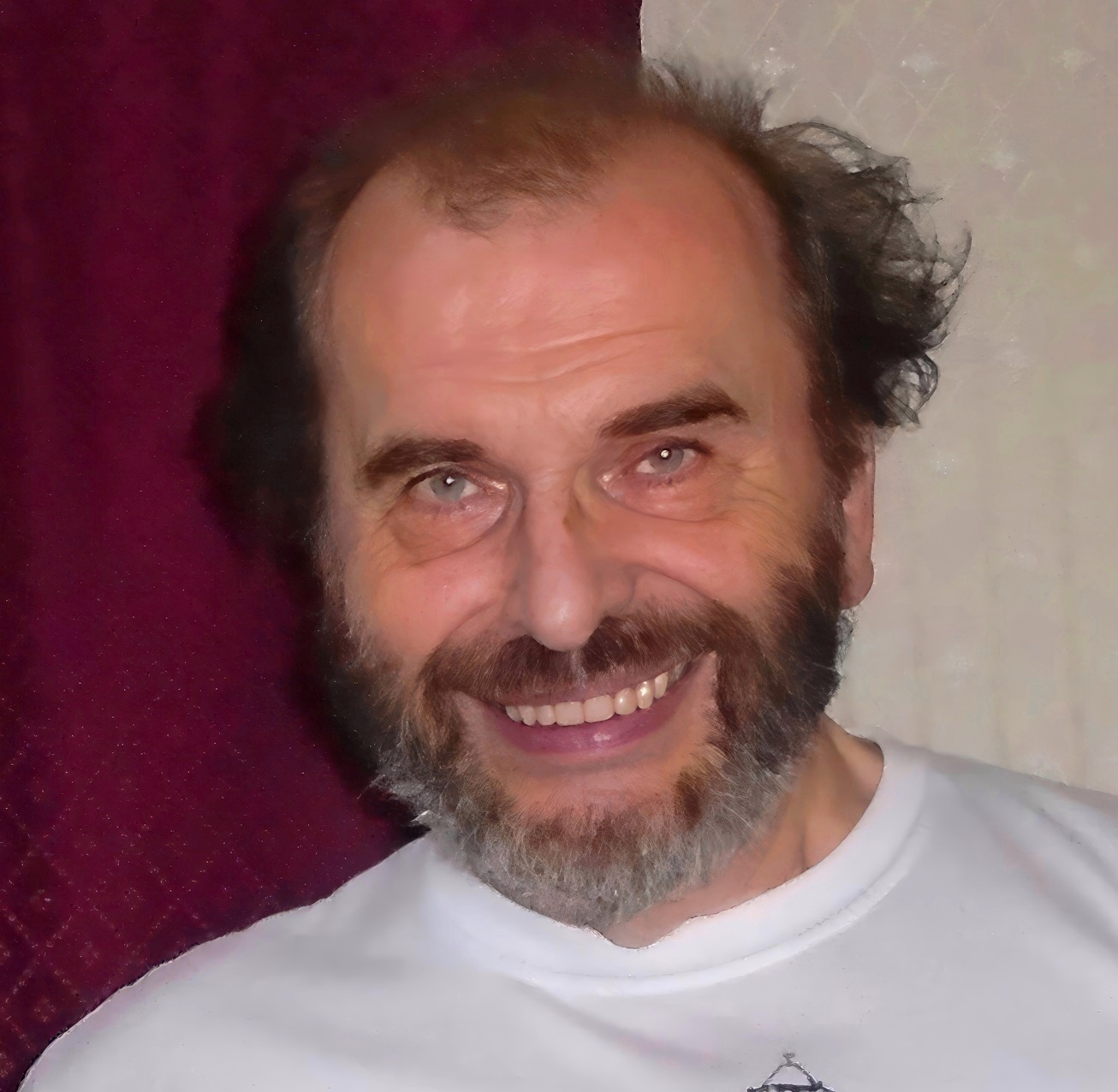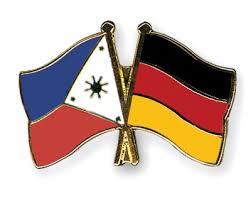
# 536, 512
©
Hilmar Alquiros,
Philippines

|
German Inventions & Discoveries! Leibniz Calculus, Notation, Integral symbol, Binary System Zuse Fully Programmable Computer, Programming Language Planck Quantum Theory, Planck's law, Planck constant |
|
|
INHALT 0.
Einführung
II. Natural Sciences
III. Technology & Engineering
IV. Culture & Society
|
|
Few nations have left such a deep imprint on human knowledge as Germany. For centuries the “land of poets and thinkers” has also been a land of inventors and discoverers, producing geniuses across countless disciplines. It is therefore no surprise that both simple and sophisticated inventions from Germany have shaped the modern world. At the very frontier of physics, German names remain foundational. Max Planck’s quantum hypothesis, Albert Einstein’s theory of relativity, and Werner Heisenberg’s uncertainty principle are not only historical milestones—they continue to guide today’s research in quantum computing and cosmology. Equally transformative were breakthroughs in chemistry and biology. Liebig’s laboratory methods reshaped science worldwide, synthetic dyes launched new industries, and Bayer’s Aspirin became the most famous medicine on Earth. Later came hormonal contraceptives—the Pill—which revolutionized social life, and the first reliable pregnancy test. German researchers also helped uncover the building blocks of DNA and pioneered antibiotics, altering medicine forever. Transportation, too, was profoundly enriched by German innovation: Karl Drais’s bicycle, Daimler and Maybach’s motorcycle, Benz’s automobile, Daimler’s truck, Diesel’s engine, Zeppelin’s airships, Junkers’s all-metal airplanes, the first practical helicopter, the jet engine, and von Braun’s rockets that carried humanity to the Moon. From Gutenberg’s printing press to YouTube, the German footprint on world history is both deep and wide. The press made knowledge reproducible and democratic; centuries later, the same spirit of innovation echoed in Konrad Zuse’s first programmable computer and his Plankalkül, the world’s first high-level programming language. Leibniz’s binary system laid the groundwork for modern computing and the internet—today embodied in YouTube, co-founded by a German immigrant, which shares knowledge and entertainment worldwide in real time. German science also reshaped our understanding of Earth and humanity. The discovery of the Neanderthal, the Archaeopteryx as a “missing link,” and Alfred Wegener’s theory of continental drift transformed how we view our species and our planet’s evolution. Music and culture carried this inventive spirit into creativity. Bach, Beethoven, and Wagner are the epitomy of classical music; Bauhaus and Expressionism redefined design. Instruments such as the clarinet, accordion, and tuba were born here; Steinway Grand pianos set the global concert standard; and German engineers gave us the record disc, magnetic tape, the tape recorder, and later the MP3 format—revolutionizing how the world listens to music. Even in everyday life, German ingenuity is everywhere: the refrigerator and adhesive tape, detergent and coffee filters, the tea bag and egg slicer, Ohropax earplugs, television and integrated circuits, SMS and SIM cards. From laboratories to kitchens, German inventions have crossed every border, reshaping culture and daily routine alike. These contributions have always combined precision with imagination: from mathematical theories that built the scaffolding of modern science, to cultural traditions such as Christmas trees, kindergartens, and pretzels that long ago became part of global everyday life. Medicine, too, reflects this arc of influence—stretching from Robert Koch’s bacteriology to the mRNA COVID-19 vaccine developed in Mainz, the very city where Gutenberg had once revolutionized printing. Looking ahead, this heritage continues in high-tech fields: renewable energy, green engineering, quantum technologies, and biotechnology. Germany’s role in shaping international standards and its focus on sustainability suggest that its influence will not remain confined to the past. Instead, it points toward an ongoing dialogue between tradition and future, between local roots and global impact. |
Kaum ein Land hat das Wissen der Menschheit so nachhaltig geprägt wie Deutschland. Seit Jahrhunderten gilt es nicht nur als „Land der Dichter und Denker“, sondern auch als Land der Erfinder und Entdecker – ein Ort, an dem Genies in allen Disziplinen hervorgebracht wurden. Kein Wunder also, dass deutsche Erfindungen, ob einfach oder hochkomplex, die moderne Welt entscheidend geprägt haben. An den Grenzen der Physik sind deutsche Namen bis heute grundlegend. Max Plancks Quantentheorie, Albert Einsteins Relativitätstheorie und Werner Heisenbergs Unschärferelation sind nicht nur historische Meilensteine – sie bestimmen auch die heutige Forschung in Quantencomputing und Kosmologie. Ebenso tiefgreifend waren die Durchbrüche in Chemie und Biologie. Liebigs Laborverfahren revolutionierten die Wissenschaft weltweit, synthetische Farbstoffe begründeten neue Industrien, und Bayers Aspirin wurde zum bekanntesten Medikament der Welt. Später folgten hormonelle Verhütungsmittel – die Pille –, die das soziale Leben veränderten, und der erste zuverlässige Schwangerschaftstest. Auch beim Verständnis der DNA-Bausteine sowie bei der Entwicklung von Antibiotika hatten deutsche Forscher maßgeblichen Anteil. Auch der Verkehr wurde durch deutsche Innovationen unvergleichlich bereichert: Drais’ Fahrrad, Daimler und Maybachs Motorrad, Benz’ Automobil, Daimlers Lastwagen, Diesels Motor, Zeppelins Luftschiffe, Junkers’ Ganzmetallflugzeuge, der erste praktische Hubschrauber, das Strahltriebwerk und schließlich von Brauns Raketen, die den Menschen bis zum Mond brachten. Von Gutenbergs Buchdruck bis YouTube ist der deutsche Fußabdruck in der Weltgeschichte zugleich tief und breit. Der Buchdruck machte Wissen reproduzierbar und demokratisch; Jahrhunderte später klang derselbe Innovationsgeist in Konrad Zuses erstem programmierbaren Computer und seinem Plankalkül, der weltweit ersten höheren Programmiersprache, nach. Leibniz’ Binärsystem legte die Grundlagen für Computer und Internet – heute verkörpert durch YouTube, das von einem deutschen Einwanderer mitbegründet wurde und Wissen wie Unterhaltung weltweit in Echtzeit verbreitet. Auch unser Bild von Erde und Menschheit wurde durch deutsche Wissenschaft verändert. Die Entdeckung des Neandertalers, der Archaeopteryx als „missing link“ und Alfred Wegeners Theorie der Kontinentaldrift veränderten unser Verständnis von Menschheits- und Erdgeschichte. Musik und Kultur führten diesen Erfindergeist auf künstlerische Weise weiter. Bach, Beethoven und Wagner bilden den Inbegriff der Klassischen Musik; Bauhaus und Expressionismus veränderten die Gestaltungskunst. Instrumente wie Klarinette, Akkordeon und Tuba stammen von hier, Steinway-Flügel setzten weltweit den Konzertstandard, und deutsche Ingenieure erfanden Schallplatte, Tonband, Kassettenrecorder und später das MP3-Format – und damit eine neue Ära des Musikhörens. Selbst im Alltag ist deutsche Erfindungskraft allgegenwärtig: Kühlschrank und Klebeband, Waschmittel und Kaffeefilter, Teebeutel und Eierschneider, Ohropax-Ohrstöpsel, Fernsehen und integrierte Schaltkreise, SMS und SIM-Karten. Von Werkstätten bis Küchen haben deutsche Erfindungen alle Grenzen überschritten und Kultur wie Alltagsleben neu gestaltet. Diese Beiträge verbanden stets Präzision mit Phantasie: von mathematischen Theorien, die das Gerüst der modernen Wissenschaft bilden, bis zu kulturellen Traditionen wie Weihnachtsbaum, Kindergarten und Brezel, die längst Teil des weltweiten Alltags sind. Auch die Medizin spiegelt diesen Einflussbogen – von Robert Kochs Bakteriologie bis zum mRNA-COVID-19-Impfstoff, entwickelt in Mainz, jener Stadt, in der Gutenberg einst den Buchdruck revolutionierte. Und auch die Zukunft wird von diesem Erbe geprägt: erneuerbare Energien, grüne Ingenieurkunst, Quanten-technologien und Biotechnologie. Deutschlands Rolle bei internationalen Standards und sein Fokus auf Nachhaltigkeit deuten darauf hin, dass sein Einfluss nicht auf die Vergangenheit beschränkt bleibt, sondern ein fortwährender Dialog ist – zwischen Tradition und Zukunft, zwischen lokalen Wurzeln und globaler Wirkung. |
|
|
|
1. Philosophy and Theory of Science
|
1. Philosophie und Wissenschaftstheorie
|
|
2. Mathematics & Logic
|
|
|
3. Computing & Digitalization From the theory of the binary system to the digital revolution:
|
Von der Theorie des Binärsystems bis zur digitalen Revolution:
|
|
II. Natural Sciences
|
|
|
1. Physics & Scientific Instruments
|
1. Physics & Scientific Instruments
|
|
2. Astronomy & Cosmology
|
|
|
3. Chemistry
|
|
|
4. Biology
|
|
|
5. Archaeology & Anthropology
|
|
|
6. Medicine:Applications & Remedies A. Anatomy
|
6. Medicine: Anwendungen & Heilmittel.
|
|
B. Early Isolations & Synthetics
|
B. Frühe Isolationen und Synthetika
|
|
C. Clinical Methods & Instruments
|
C. Klinische Methoden und Instrumente
|
|
D. Infectious Diseases & Immunology
|
D. Infektionskrankheiten & Immunologie
|
|
E. Pharmaceutical Innovations
|
E. Pharmazeutische Innovationen
|
|
III. Technology & Engineering
|
|
|
1.Transport & Mobility
|
|
|
2. Machines & Devices
|
|
|
3. Printing, Communication & Signals
|
3. Printing, Communication & Signals
|
|
4. Household & Everyday Life
|
|
|
5.Communication & Media From the first optical and acoustic media to the global platform:
|
Von den ersten optischen und akustischen Medien bis zur globalen Plattform:
|
|
IV. Culture & Society
|
|
|
1. Religion & Traditions Festivities, symbols, and rituals that are now widespread worldwide:
|
Festlichkeiten, Symbole und Rituale, die heute weltweit verbreitet sind:
|
|
2. Education & Language From the earliest experiments with constructed languages to modern pedagogy:
|
Von den ersten Experimenten mit Kunstsprachen bis hin zu moderner Pädagogik:
|
|
3. Arts, Design Art, music, and aesthetic innovations:
|
Kunst, Musik und ästhetische Innovationen:
|
|
4. Music & Musical Instruments
|
|
|
5.Sports From “Turnvater” Jahn to Playmobil – physical culture, games, and competition:
|
Von Turnvater Jahn bis Playmobil – Körperkultur, Spiele und Wettkampf:
|
|
6. Toys & Games
|
|
|
VI. Timeline a)
1151~: Morality play 'Ordo Virtutum' Hildegard of Bingen OSB 241 1200<: Artificial language 'Lingua Ignota'Hildegard of Bingen OSB 225 1434: Christmas market 'Striezelmarkt' Dresden 515 1505: Pocket watch = 'Watch 1505' Peter Henlein 242 243 1512, 1576: Theodolite Gregorius Reisch + Martin Waldseemüller 1512 417 + 'first version' Erasmus Habermehl 1576418 1517: Protestantism + Lutheranism Martin Luther 516 1525: Ray tracing = 3D rendering technique Albrecht Dürer 48 |
|
VI. Timeline b)
1600<: Modern Christmas tree517 518 1605: Newspaper 'Relation aller Fürnemmen und gedenckwürdigen Historien' Johann Carolus, Strasbourg = Holy Roman Empire of the German Nation226 1608: Telescope Hans Lippershey 419 1609–1619: Kepler's laws of planetary motion Johannes Kepler 53 1611: Kepler conjecture Johannes Kepler 295 1623: Mechanical calculator Wilhelm Schickard 296 297 1650: Vacuum pump Otto von Guericke 420 1654: Magdeburg hemispheres Otto von Guericke 421 1655: Self-propelled wheelchair Stephan Farffler 567 1663: Electrostatic generator Otto von Guericke 422 1663: Magazine 'Erbauliche Monaths Unterredungen' 244 1673–1676<: Calculus298 + Leibniz formula for π + Leibniz's notation299 Gottfried Wilhelm Leibniz 1669: Phosphorus discovery Hennig Brand in Hamburg85 1675: Integral symbol Gottfried Wilhelm Leibniz 301, → E1686 article 1680-1700: Binary numeral system Gottfried Wilhelm Leibniz 170 ... →Comuter, AI! |
|
VI. Timeline c)
1700~ Dirndl, Lederhosen + Tracht163 1700<: Easter Bunny519 1700~: Clarinet Johann Christoph Denner Nuremberg402 403 1706: Prussian blue Heinrich Diesbach Berlin86 1708: Meissen porcelain = European hard-paste porcelain, Ehrenfried Walther von Tschirnhaus Meissen49 1709: Eau de Cologne Johann (Giovanni) Maria Farina Cologne164 1724: Fahrenheit Daniel Gabriel Fahrenheit 87 1773<: Oxygen discovery Carl Wilhelm Scheele 90 + Joseph Priestley: published first! 1776: Illuminati by Adam Weishaupt 521 1777: Discovery of Lichtenberg figures Georg Christoph Lichtenberg424 1780~: Schafkopf = card game556 1781: Discovery of Uranus, with two of its major moons (Titania + Oberon), by William Herschel 54 1789: Uranium91 + Zirconium92 discovery Martin Heinrich Klaproth 1795: Least squares by Carl Friedrich Gauss 302 1790-1800s: Humboldtian science Alexander von Humboldt 62 |
|
VI. Timeline f)
2001: Speed badminton Bill Brandes Berlin547 2005: YouTube, co-founded Jawed Karim265 2020 mRNA-based COVID-19 vaccine (BNT162b2) Uğur Şahin + Özlem Türeci376 377 . BionTech offered to Pfizer for mass production |
|
→
|
→ "15+ Dinge, von denen du nie wusstest, dass sie aus Deutschland stammen!"
5. Digitale Quellen und Populärkultur |
|
|
 ©
by
Dr. Hilmar Alquiros,
The Philippines
Impressum Data Protection Statement / Datenschutzerklärung
©
by
Dr. Hilmar Alquiros,
The Philippines
Impressum Data Protection Statement / Datenschutzerklärung 
û